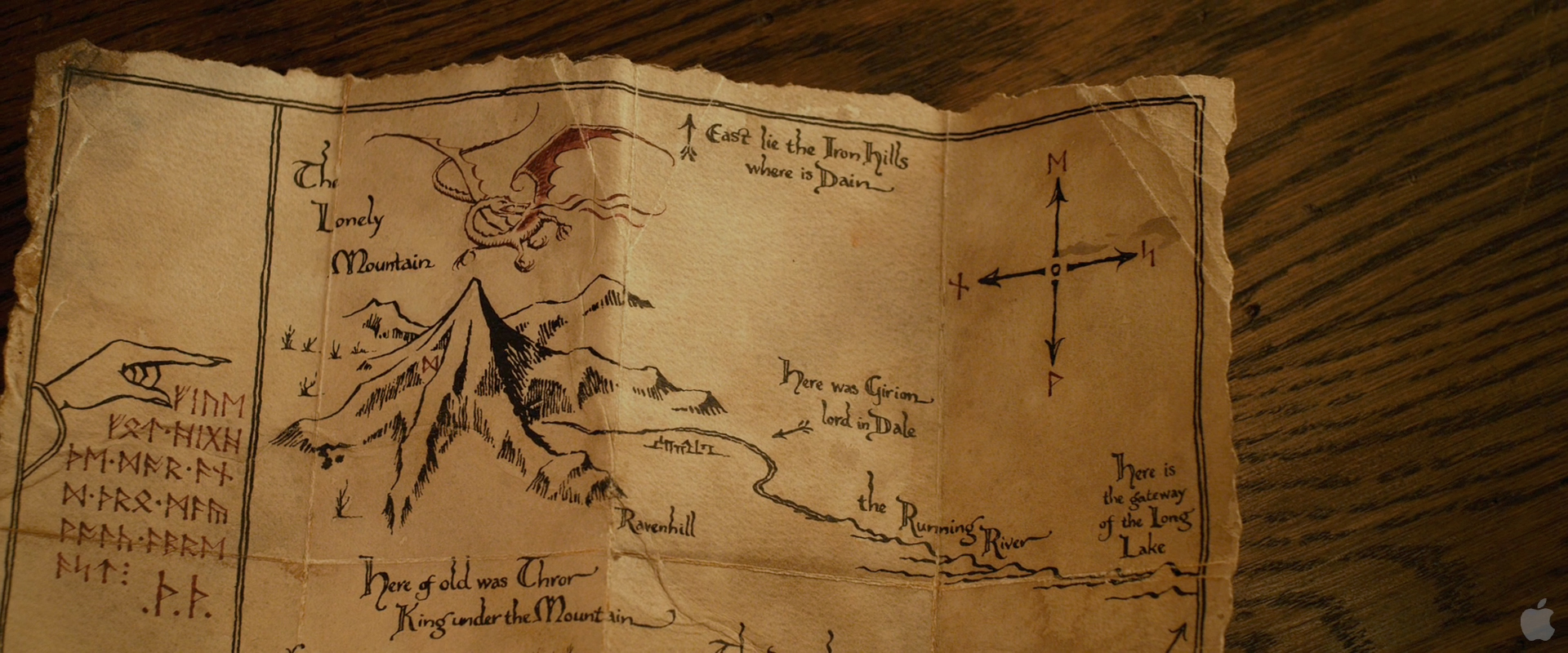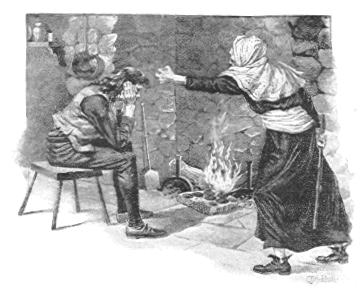As most people already know, J.R.R Tolkien was somewhat of an Anglo-Saxon, Middle Ages, and Norse Mythology enthusiast, having been involved in such works as Sir Gawain and the Green Knight (translator), Beowulf: The Monsters and the Critics (where he forgets about Grendel's Mother), and The Legend of Sigurd and Gudrún, as well as being professor of Anglo-Saxon studies in Oxford. Tolkien was also the founder of the Kolbitar club (members included C.S. Lewis), where a group would sit around and read Icelandic and Norse sagas over some pints of mead...well...maybe not the mead bit, but the rest is true.
WHERE CAN I GET THIS?!
So anyway, the influence of all these cultures and their literatures is pretty obvious to spot in The Hobbit and The Lord of the Rings trilogy.
- There were many 'rings of power' in Norse mythology - perhaps the one ring is based on "Andvaranaut", a magical ring forged by the dwarf Andvari. Norse god of mischief, Loki, tricked Andvari into giving him this ring, and so the dwarf, in revenge, curses the ring so that it brings destruction to whoever wore it.
- Many of the dwarves' names in The Hobbit are taken from Norse mythology, and can be seen in the Prose Edda, including Dvalin, Bifur, Bafur, Bombor, Dori, Nori, Ori, Oin, Fili, Kili, Gloin and Thorin!
- There's clearly a link between Middle-Earth and Midgard, the Norse realm of humankind.
- There's a possibility that the inspiration for Smaug came from the dragon that appears in Beowulf
- Perhaps Arwen is an adaptation of Freyja, her necklace which she gives to Aragorn a version of the Brisings necklace, which Freyja wore to enhance her beauty. It is also notable that Freyja had a human lover, Óttar.
- And there are many more similarities...
And now that I've gone off the point somewhat, it's time to talk about what the post is actually about...Éowyn! But it's mostly about....Æthelflæd!
So, who the hell is Æthelflæd? Well, she just so happens to be a pretty kick-ass Anglo-Saxon woman. Born during the height of the Viking invasions, she was the daughter of Alfred the Great, King of the Anglo-Saxon kingdom of Wessex (the other three kingdoms being Northumbria, East Anglia and Mercia). During the 9th century, England was experiencing more frequent attacks from the Vikings, which culminated in "The Great Heathen Army" in 865. In 871, Æthelflæd's uncle, King Æthelred died from wounds received in battle, and Alfred the Great came to power, winning a victory over the Danes. This led to a peace agreement, in which the Vikings were given the eastern part of Mercia, to be incorporated into the Viking East Anglia.
THIS IS ENGLAND
Unluckily for Alfred, the Vikings didn't keep their word (after all, they were plundering, raiding Vikings), and after a few years laid an attack on Wessex, and Alfred and the rest of the royal family were forced to flee to the Somerset marshes, while the lousy King of Mercia fled to Europe (what a dryballs). In Somerset, Alfred apparently took shelter in the home of a peasant woman who asked him to look after some cakes on the fire. Being too preoccupied with the kingdom and all that nonsense, he accidentally let the cakes burn.
You let the cakes burn, you dope!
Anyway, while in Somerset, Alfred got together some followers and turned them into warriors (I'll Make a Man out of You from Mulan comes to mind), and defeating the Danes at the Battle of Edington. He eventually returned London to the Mercians, and Æthelred, ruler of the remaining Mercia recognised Alfred as his Overlord. And finally, Æthelflæd comes into the story, as she was offered by Alfred to Æthelred, to cement their alliance, much like a peace-weaver would have done in Ancient Scandinavia. Alfred defeated yet another wave of Vikings, and all across England, was recognised as king. After Alfred's death, his son Edward become king of Wessex. Meanwhile in Mercia, Æthelred falls ill, and Æthelflæd effectively became ruler.
With her brother Edward, Æthelflæd raided Danish East Anglia and repulsed the last major Danish army sent to ravage England. Æthelflæd then won the support of the Danes, and formed an alliance with the Scots and the Welsh to stand against the Norwegian invaders. When her husband died in 911, she became the sole ruler of Mercia and builds fortifications throughout Mercia. She then went on to invade Wales in order to avenge the murder of a Mercian abbot Ecgberht, and succeeded in capturing the king's wife. Æthelflæd then led her armies against the Viking invaders, capturing their stronghold at Derby. In 918, the people of the region of York promised to pledge their loyalty to Æthelflæd in order to gain her support against Norse raiders. Unfortunately, before this could be realised, she died in the same year, leaving behind her daughter Ælfwynn as ruler of Mercia (although she is removed from power by Edward).
Æthelflæd's and Éowyn's lives are by no means identical, I am not saying they are, but Æthelflæd was most likely an influence, especially noting that the Rohirrim in general seem to have been influenced by the Anglo-Saxons - their language is based on Old English, and the Hall "Meduseld" brings to mind images of the mead-hall, especially that of King Hrothgar's in Beowulf. In fact, comparisons can also be made between Éowyn and Wealhtheow, as both serve as cup-bearers in the Great Hall. Comparisons can also be made between the hymn sang by Eorl in Lord of the Rings and 'The Wayfarer', an Anglo-Saxon poem. And many more comparisons too. It makes sense that Éowyn should be based on Anglo-Saxon sources also (although there have also been comparisons made between her and the Valkyries of Norse Mythology), and is perhaps some sort of hybrid between the traditional cup-bearer Wealhtheow, and the more active and powerful Æthelflæd.
Too often have I heard of duty,’she cried. ‘But am I not of the House of Eorl, a shieldmaiden and not a dry-nurse? I have waited on faltering feet long enough. Since they falter no longer, it seems, may I not now spend my life as I will?
'What do you fear, lady?” he asked.
'A cage,” she said. “To stay behind bars, until use and old age accept them, and all chance of doing great deeds is gone beyond recall or desire.'”
Éowyn's deeds also remind me of my reading of Lagertha. Also a shieldmaiden, she disguises herself as a man (much like the women in Lagertha's story do when their relam is attacked by the King of Sweden) and proves herself the be as capable as any man on the battlefield. Hell, she even kills the witch king!
By Jake Murray







Hi, Alison, I enjoyed this very much. I love the way that for the author of the Mercian register there seems to be no conflict between Aethelflaed's gender and her public role. In tandem with my academic career, I have published two historical novels set in her court (The Bone Thief, Ebury Press, 2012 and The Traitors' Pit, 2013), and if you have time I would love to know what you make of them.
ReplyDeleteBest wishes,
Victoria (was Thompson) Whitworth
I'm glad you liked it :) And I was quite surprised that her gender didn't seem to be an issue! I just looked up your novels, and they both seem really interesting, and wow, really good ratings! I will definitely get around to checking them out!
Delete